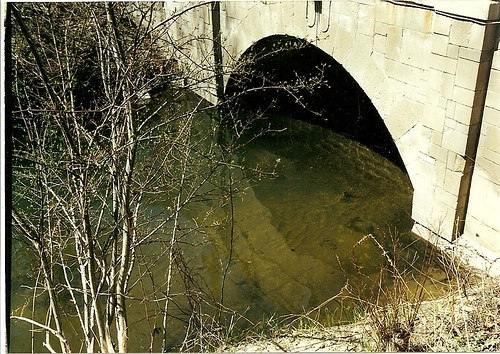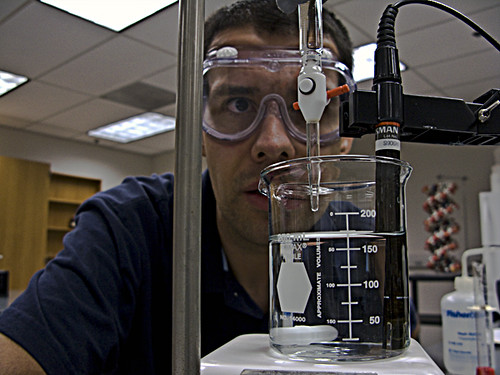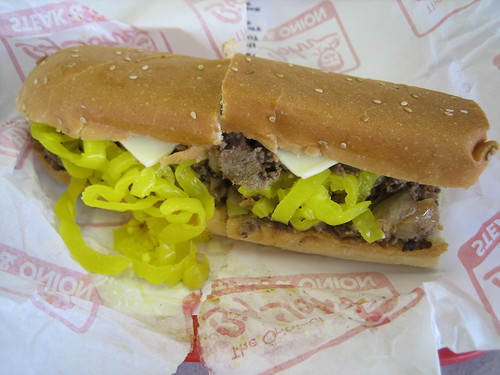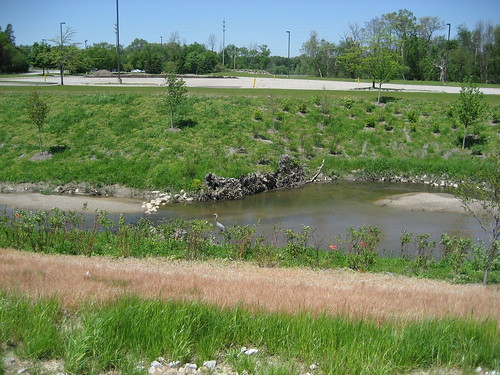In the summer of 1970, when I was six years old, my family and I moved to the east-side of Flint, Michigan. Flint, as most of you no doubt are aware, is Michigan’s former automobile manufacturing hub. Its more recent claim to fame is as the focus of Michael Moore’s withering movie about the relationship between the town and General Motors, “Roger and Me.”
Less than a block from my house wound a small urban stream. On its bank, beyond where West Vernon Drive takes a right turn to make way for the stream — becoming Brookside Road — there was a small stand of bushes, which had a surprisingly roomy hiding place behind it. As a child entering this place, you would instantly become aware of the delightful trees — each perfectly placed — to form “rooms” in this small natural structure, and to shade the entire structure from the sun. One of the trees was particularly climbable. Next to this tree was the top of a shallow wall that descended into the creek valley, to a cement platform. Walking down hill, around the wall to the platform, you would see the mouth of a storm-water pipe coming from the wall, and draining into the stream.
You could dangle your feet over the wall, and watch the water flow down the crick from east to west, left to right. If there had been any rain, water would trickle, and sometimes rush out of the storm-drain below your feet and across the platform, into a four foot long tributary that led into the stream.
A network of tiny paths led from room to room in this small structure. These paths formed spider web connections with other paths that led east along the stream through a small wooded riparian buffer, perhaps 30 feet deep, between the Franklin H. Pierce School parking lot, and the stream. A guardrail separated the parking lot from these woods preventing any adult interlopers from approaching the structure from the east. Shrubbery, including several big round bushes, obscured the inside of the structure from intrusion and observation from the direction of the school to the north, and from my neighborhood. Unless you were extremely observant, you would only be aware of the place and anyone in it if you approached it from the west, walking in the grass that ran between Brookside Road and the stream.
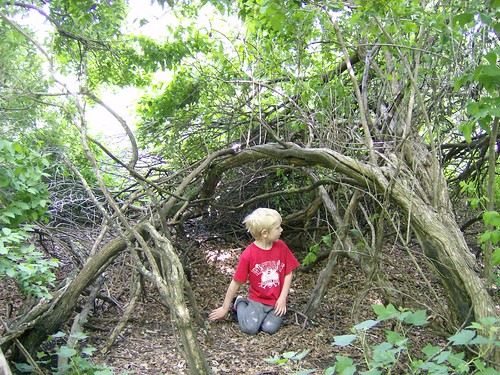
To the south, across the stream from this place was Pierce Park, which included an interesting woods, and a huge — occasionally mowed — open grass field, with a baseball backstop on the far side. My little hiding place on north side of the stream aligned with the line between the woods and the open field on the south side. Sitting on the wall over the drain, you could survey everything happening in the open area of the Park, and along the first stretch of the main trail which led through the woods along the south side of the stream. On a sunny summer day, your surveillance of Pierce Park could be accomplished with great comfort and privacy from this place, as it sat deep in the shadows cast by the trees.
I was attracted to this place like a magnet: the trees, bushes, paths, wall and platform created an ideal hiding place and play area: the perfect fort! My brother Eric and I immediately claimed it as our own.
A few days later, my brother and I rounded the big bush at the entrance to our fort, and discovered, to our horror, that there were two other boys already in it. The ensuing argument, as to who held “legal title” to the property, was intense but brief. Eric and I perceived that we were no match for the boys. Timmy and Tom both had red hair, blue eyes, and were each plainly stronger than either Eric or I. It turned out that they were not brothers, but friends, who lived along Calumet Street. Timmy’s house, I discovered, was just over the fence behind mine. They had been playing in the Fort for years before we had arrived. I quickly became friendly with these boys and some other neighborhood kids. Every day that we could, we met at the Fort and played in the woods by the stream.
My new friends told me that the stream was named “Gilkey Creek,” which we all assumed was some kind of comment on the water quality – like “Gyucky Creek.” We all guessed that the water was bad, as it sometimes had a sour stench, and was opaque with a milky yellowish-brown discoloration after moderate rain-storms. In fact, the creek was named for Levi Gilkey, who was supposed to have taken up residence at the mouth of the small stream in 1831. A native of Genesee County, New York, Gilkey was the first settler in the surveyed township outside of the limits of what was then “Sydney” Michigan. Shortly thereafter, the city was renamed “Flint,” allegedly after the Native American name of the river into which Gilkey Creek runs, ‘Pe-wan-i-go-see-be’ meaning ‘River of the Flints.’ Mr. Gilkey did not stick around long enough to learn this new name, however, leaving the area after only a few years “in disgust” due to many legal disputes over the property abutting Gilkey Creek.
My friends and I called this place “the Fort” and the stream “the Crick” (in this part of Michigan the word “creek” is pronounced “crick” like “crick-in-the-neck”). We would divert the water running out of the storm drain onto the platform with tiny dams that we constructed out of pebbles and small rocks. We would play “army” and hurl clots of mud at each other that we dug out of the steeply eroded banks of the Crick near the Fort. We would hide from adults, older kids, and playmates in the Fort and along the Crick, especially from the man who lived near the bridge over the Crick located near the corner of Brookside and Franklin Streets, who would occasionally chase us. We would walk the path that ran down the far bank of the Crick, sometimes pretending that we were on safari, and wonder at the mysteries we discovered in the Crick, like large piles of freshly mowed grass that appeared in the water – seemingly – from nowhere. We would engage in larger construction projects near the Crick with sticks, and rocks and rubbish, occasionally exciting concern from adults, such as when we ran into the house covered with mud, in search important implements of destruction like a crow bar.

In the winter, we would tromp through the snow — or down West Vernon Drive if it had been plowed and salted — to slide along the frozen Crick in our rubber boots, and play with little water geysers we created by banging holes in the ice. In the summer, we would skip stones in the Crick, and walk across it on little crossings we created from large stones.
The Crick would flood several times a year, pouring into our and our neighbors’ basements, and giving everybody in the neighborhood a reason to come out of their houses to share in the excitement, and bitch about the disaster we now all had in common. It was also by the Crick that I started in chase of my first rainbow (actually believing at first that I could catch it), got into my first fist fight, found my first risque magazine amongst the litter, and smoked my first (and last) cigarettes.
I also learned that the Crick played host to several different forms of wildlife – mostly water-bugs, but also crustaceans such as crayfish, mollusks such as clams and snails, aquatic worms and the immature forms of aquatic insects such as stonefly and mayfly nymphs. More importantly to us, in some areas, there were small fish that may have been minnows. We played with what we could find, trying to trap the little fish in our fingers, and flipping over logs, boards and garbage in the nearby woods to try to find and catch garter snakes.
When I was about eight, my friends and I found a larger fish – almost 5 inches long – dead along the banks of the Crick near the Fort. “How did it get here,” we wondered? We had never seen one anywhere near that big in the Crick before. Some of us speculated that fish like that must actually live in the Crick, while others insisted that it must have been thrown there by a passer-by. Much later, I deduced that it had swam up the Crick several miles from the Flint River, in a valiant, but ultimately suicidal attempt to spawn. This must have been very difficult for the fish, as downstream, the Crick passed over and amongst multiple stone and brush blockages. It also went through a one-fifth mile-long underground culvert under the grounds of the Mott Community College, and the “Applewood Estate.” The latter was once the home of Charles Stewart Mott, one of the original partners in General Motors, and a very rich, well known philanthropist and civic activist, who was largely responsible for the development of Flint. My friends and I spent about a half and hour talking about the dead fish, poking at it all the while with a stick.
At some point – I can’t exactly remember when – the City of Flint embarked upon several “projects” in our neighborhood to straighten and widen the Crick due to all the flooding, which was doubtless caused by the fact that the Gilkey Creek watershed is 92% “developed.” My friends and I had, by that time, turned the focus of our attentions to an area of train tracks by Robinson Drain, a tributary of Gilkey Creek, and were hanging out mainly around “The Tracks” where the Drain emptied out from under Interstate 69, and the I-69 train underpass. The best thing that can be said about my friends’ and my “play” at The Tracks is that, by shear grace or luck, nobody died. Once, my friend “Buddy” got shot in the leg there by a train conductor with a shotgun loaded with salt. Even though Buddy was in pain for days, we were undeterred in what I recognize now were shudderingly dangerous activities. But we spent enough time around the main — now artificially widened — stem of the Crick — mostly driving our motorized “minibikes” around Pierce Park — to realize that all of the little fish had suddenly vanished.
My friends and I immediately concluded that “pollution” must have killed the minnows. So some of us embarked on a journey up the Crick — a direction we rarely ventured in – to see what the matter was. We got as far as a long tunnel that the Crick flowed through under a gas station on the corner of Court Street and Dort Highway. In the middle of the Crick, as it exited the tunnel, was a clearly distinguishable, multi-colored oil-slick.
I remember being so teed off about the slick that I went home and ranted about it to my mother for over an hour. The gas station company was polluting our Crick and killing our fish. My mother should “call the police,” I said. We should “report it,” I demanded.
Ultimately, none of that ever happened. Instead, I channeled my energies into a school science project under the title “Can Gilkey Creek Water Be Purified?” The project involved collecting samples of water from various parts of the Crick in baby food jars. I then used aluminum potassium sulfate (alum) as a flocculating agent – just like they did in some water purification plants – to precipitate out particles suspended in the water. I then ran the “flocculated” water through a still at various temperatures under the theory that any volatile compounds in the water would evaporate off first, and that what made it through the still after the first few minutes would be clean. My dad took the “before” and “after” water to the hospital he worked at for analysis.
I was very pleased with myself when he confirmed to me that the “before” water was polluted, and the “after” water was clean. I don’t think I correctly understood what he meant by “clean.” I told him I wanted to drink some of the water I had “cleaned.” He talked me out of that.
Also around that time, I developed a strong interest in tropical fish. I regularly made trips to the pet store to restock my 30 gallon tank with new fish, after my attentions, or lack thereof, killed the old ones. I read a 1000 page taxonomy book about fish from cover to cover.
My parents were delighted that I was developing an interest in science, but rather concerned about the direction my other “play” was taking me with the neighborhood kids. There was that time in fifth grade when my friend Scott’s parents went on vacation, leaving him to his own devices, at home, for a week. All of my friends and I went over, and we commenced a never ending, unsupervised, delinquent party that included playing the 8-track tape of “Boston” — very loudly — on his parent’s stereo over-and-over again, hitting each other with towels rolled up cleverly into “rat tails,” and experimenting with lighting gasoline soaked tennis balls on fire, and kicking them around Scott’s back yard.
I was not at Scott’s house when this “play” devolved into one of the gang placing a box of bullets, an aerosol can, and a door into a gasoline puddle in Scott’s yard, and lighting that on fire. However, I was there with my friend Susan when the police showed up to take Scott away.
Another example was the time I climbed on the back of Scott’s yellow Kawasaki 150 dirt bike for an evening ride. We rode over to the parking ramps at Mott Community College, and raced up and down the ramps. Scott said he had done this before without any hassles. However, this time, the police suddenly showed up on Scott’s tail with their lights blazing. Scott decided to make a run for it, and I was unexpectedly caught in the midst of a high-speed police chase running right through the back streets in my own neighborhood. At one point, we zipped right by some other kids who remember that the police were five feet from the back of the bike. I still cannot fathom how we made the turns. Such chases never end well for the runners when you see them on TV, but they didn’t have any of those “real cop video chase shows” on TV back then, so Scott didn’t know any better.
Besides, he had a plan: after what seemed like 15 minutes of chasing, we rode the bike across the bridge on North Vernon that leads into Pierce Park, and then off the road into the dark of the big open field in the park, heading for the woods. The police followed us across the field, but crashed loudly into the trees at the head of the trail Scott piloted us into. Scott killed the engine about 75 yards into the woods, and we ditched the bike in some brush. We could hear the cops, now out of their car, cursing. We ran north through the woods — and then through the Crick – back into our residential neighborhood.
Scott kept on running all the way home. I could not do that because my house was much too close to the now wrecked police car. So I decided to blend with a group of kids I knew who were hanging out on a footbridge across the Crick on Brookside near the end of Kensington Street. The police drove by a few times, and once stopped and questioned us, but we all feigned ignorance and they left us alone. I waited for a while with the kids on the footbridge, and when I thought the police were gone, walked east on Brookside in the direction of home.
That turned out to be a mistake: as I was strolling along nonchalantly, a police cruiser pulled up, and shined its spotlight on me. “Where are you coming from?” the policeman asked. “The footbridge back there,” I replied, “I was just there with my friends.” “Then why are your pants are soaked with water from the knees down?” the policeman inquired. There was no denying it: I was busted. The Crick had betrayed me.

The teen traffic court found me guilty of riding on the back of a motorcycle without a helmet. The judge gave me a written warning, ordered me to put it in the drawer with my socks so I would see it every day for thirty days, and strongly advised me not to hang out with Scott anymore.
So one day, my dad informed me that instead of attending the public junior high school, Whittier, with all my neighborhood friends, I would be going to Valley, a private “alternative” college preparatory school in downtown Flint that my neighborhood friends had told me was for “wimpy kids.”
My dad and I got in a tremendous row. There was no way I was going to let him make me go to Valley, and miss out on all the devilment to be done at Whittier Junior High that my friends and I had been talking about for years.
But that all changed a few days later when my friends and I heard these tremendous “BOOMs” coming from the Gilkey Creek bed. We ran over, and discovered an older red haired boy, Jon, throwing things into the Crick that then exploded with a tremendous noise and put up a huge column of water.
Naturally, we were intrigued.
Jon showed us what he was throwing into the Crick: aluminum Kodak film canisters that he had punched holes in with a screw driver. In one sealed canister were little pieces of some kind of mysterious paste preserved in kerosene that Jon took out with tweezers and placed in the perforated Kodak canisters. The more pieces of paste he put in, the bigger the BOOM was when he dropped the canisters into the river. “What is the stuff you are using in the canisters?” we wanted to know. “Sodium and potassium metals,” he said, reluctantly. “Where did you get it?” one of us asked. “Valley School,” he replied. “It is where I go to school.”
From that moment, The Valley School was no longer a problem for me.
During my first few years at Valley, I spent many hours in the chemistry lab volunteering as a lab assistant for Vince, one of Valley’s science teachers, who had a very laissez-faire attitude in regard to students mucking about with the chemicals. I talked often with Jon and Vince about how to make things explode with chemicals, and became a devotee of “chemical magic” books, trying my little experiments out in the lab when there were no classes. I also got into the sodium and potassium metal that Vince had stored in the metal chemical cabinet for more dangerous chemicals, and shaved off a few pieces. When I threw my own Kodak canisters into the Crick, they exploded just as well for me as they did for Jon.
But I did not spend as much time at the Crick after I started attending Valley. One reason for this was that the City suddenly built a metal footbridge across the Crick from the bank near Brookside to the woods about 30 feet west of the Fort. The bridge was not much travelled, but there were some who crossed it, and when they did, they could see the inside of the Fort, including everyone in it, and what we all were doing. That did not completely ruin the Fort, but it did make it much less attractive, and there were other hangouts we could go to by then where we could carry on our activities with more privacy.

There were a few beer parties in the woods next to the Crick. At some of those, and on other occasions, I tried to get my Valley friends together with my neighborhood friends. That frequently turned out weird in one way or another. Susan, from the neighborhood, ended up going to Valley herself for a few years, which was good. And while I never completely broke off ties with most of the neighborhood kids, over the years, I was seeing them less.
Every night, I would walk my dog down Brookside, next to the Crick, in the direction of the Fort. But I never went down into the Crick to check for the little fishes again. I never even thought of it. I just accepted that they were not there.
I often looked out of my bedroom window at night at the Fort. Sodium lamps near the Pierce School parking lot would shine on the leaves of the big tree, casting bizarre shadows that sometimes looked to me like a face.
Somehow I made it through high school and just minutes after my graduation ceremony, drove away from the Crick and Flint to become an undergraduate at The Colorado College, in Colorado Springs, Colorado. In my sophomore year, I was very excited to take Analytical Chemistry for my biology major. I had hoped to re-live and improve upon some of my earlier fun experiences in the Valley Chemistry Lab.
Unfortunately, it did not work out that way. The Colorado College offered classes under the Block Plan, in which you take only one course at a time, for three-and-one-half weeks at a time. Analytical Chemistry at Colorado College meant three solid hours of classes every morning, four hours of labs every afternoon, and a ton of chemistry home work every night. I was so sick of chemistry mid-way through the second week that I virtually ran out of the science building each night after I had completed the lab assignment. Besides, unlike at Valley, all the chemicals were kept in a locked storage room, and I could not get access to them.
Of all the experiments we did in Analytical Chemistry, one stands out: the titration lab. Our teacher broke the class up into groups of four students each, and lab assistants distributed a large volume of chemicals, some glassware, equipment, and an unusually large piece of graph paper to each group. The prep time alone took about an hour with each of us working hard. After all the preparations, we had before us an extraordinarily large beaker with a sensor sticking in. This connected to a pH meter with a digital read-out, and probably to other similar electonic equipment. The beaker sat on top of an electrical device that spun a white, plastic coated cylindrical magnet at the bottom of the beaker, which in turn, stirred the liquid in the beaker at a steady and adjustable rate. I can’t remember the many chemicals we mixed together to make the half-gallon of compound in the beaker, but remember that among them was phenolphthalein, an organic compound of the phthalein family that is widely employed as an acid-base indicator. The compound we had created was a very strong acid, so the liquid was clear.
There was some kind of graduated cylinder or pipette mounted on a metal framework above the beaker with a special nozzle arranged so that one of us could measure a different clear reagent from the cylinder into the beaker, drop by drop. Our assignment was to do just that. After each drop of liquid was added to the beaker, we were to note down the readings from the equipment measuring the properties of the compound in the beaker, and any changes in the appearance of the liquid. After the appearance of the liquid changed, we were to continue the procedure for ten more drops, graph the results from the analytical equipment in different colors on the graph paper, and note in our lab books our overall observations and conclusions from the experiment.
We dripped the solution from the cylinder into the beaker for almost a full one-half hour, and virtually nothing happened. My job was to watch the pH meter, and I dutifully called out the readings off the meter to my lab partner, as the acidity slowly and very slightly decreased. As time wore on, we noticed that the water near where the droplet fell into the beaker would take on a slightly reddish hue for a second after the droplet hit the water, but then the red would be wisked away immediately by the magnet spinning in the bottom of the beaker. Then, one drop caused a little explosion of redness in the beaker, which dissipated in less than a second. I noted the pH again: it had risen by one full point.
The next drip immediately turned the entire solution a vibrant red hue, and it stayed that way. The pH meter indicated that suddenly, we were no longer looking at a half gallon of a strong acid, but instead, a half gallon of a moderately strong base. When we graphed the readings, the lines showed either that whatever it was we were measuring had, at the moment when the liquid turned red, either increased tremendously, or had fallen off a cliff. We wrote up the analysis, and concluded that the complicated chemistry in the beaker had undergone a kind of chemical “cascade” where one reaction suddenly led to another, whose product caused a chemical that had not been active up to this point at all to change its structure suddenly, and in turn, to completely alter the chemistry of the rest of the chemicals in the beaker.
Looking at that graph, I was trying to think about the experiment as an “environmentalist” would — which is what I imagined myself to be. From my novice environmentalist perspective, it was not comfortable to consider that some natural systems have “tipping points” where you can drip, drip, drip a little of some innocuous stuff into a relatively huge amount of solution for a very long time, and nothing happens, and then the next drip or two — a very small alteration — causes a cataclysmic chain reaction that changes everything. In nature, such changes would be for the worse. What other natural systems behaved that way? Could you “kill” the complicated biological balance in a pond or a stream by dumping just one more cup of some pollutant in, even though you had done the same thing with the same stuff many, many times before, without effect?
But in the early 1980s, we were not talking much about “just one more cup” scenarios, but massive possible alterations to ecosystems, and the planet. As I was first developing a political consciousness, high Reagan Administration officials were implying that a nuclear war was “winnable” and “with enough shovels, everyone is going to make it.” James Watt was running around promoting massive changes to the ecology of the American Southwest in the name of short term business gains. The EPA was scaling back extra-statutorily on the Clean Air Act and Clean Water Act.
Shortly thereafter, I was in Colorado Springs, driving West on Uintah Street in the evening to buy seafood or beer or something, thinking about the experiment, and the Crick, and looking at the sun set behind the mountains. The Crick empties into the Flint River in downtown Flint, which in turn enters the Shiawassee River in the Shiawassee National Wildlife Refuge near Saginaw, Michigan. The Cass and Tittabawassee combine with the Shiawassee to form the Saginaw River. The Saginaw empties into the Saginaw Bay of Lake Huron, one of the Great Lakes.
Everybody knew about the pollution problems in the Great Lakes. My friends and I had seen and smelled dead fish by the thousands, having scaled the fence in order to survey the Cedar Point beach, near Sandusky, Ohio. There were times that the pollution would become so bad that nobody could swim in those waters. I was moved to tears. The entire planet was under assault, and somehow, as a 19 year old biology major with a “B” average in a small liberal arts school in Colorado, I was the one who was going to have to save it.
So what happened to me? The short answer is that I got distracted. All these nightmare politics diverted me away from the sciences. I changed my major to political science, and abandoned any dreams of spending my life studying the biology in and around certain streams. I eventually pursued a masters degree in “national security policy” thinking that knowledge and rationality was the best way to fight against the possible predations of the bomb. While in the masters program at University of Maryland, I learned that I could get a law degree with only two more years of study, and thus, would be qualified to talk back not only to generals – but to lawyers — who I supposed were also part of the nuclear problem.
But by the time I graduated from University of Maryland in 1990, the Administration of George H.W. Bush had swallowed a dose of sense about strategic matters, and concluded that peace no longer required further study. The Pentagon was not hiring, nobody else thought they had much use for another new specialist in “national security policy,” and I was not so sure that the world really needed one either.

I never really abandoned environmental issues: I embraced them when they came my way while working as a law clerk at the Pentagon, and in apartheid South Africa. But these were mostly chance encounters, not by design. Instead of embracing a “green” career, I would pursue occasional “save the world” environmental causes by attending a meeting here and there. I would make small donations to big causes through my wife, who always opened and carefully considered the latest solicitations from environmental organizations in the mail. I had a young family, had to make a living somehow, and realized that if I did not start practicing law then, I never would. Besides, I really liked the law, and thought I was pretty good at it. So I did practice, and it lasted many, many, mostly happy — but very busy — years.
In 2006, I took my older, college bound son to visit a few of my old friends in Flint. My son and I stopped by Big John’s Steak and Onion on Dort Highway near Court Street, and each of us had a foot-long submarine. You had to order the subs from behind a bulletproof glass barrier. To use the bathroom, I had to go into a bar next door, aptly called “Down the Hatch East.”
The entire area was literally falling apart. Catching up on news, I learned that many of my neighborhood friends had died, and most of the rest had moved away. We drove by my old house, and slowed, but did not get out of the car. We then breezed by the Fort which looked much the same as it had 30 years earlier. Light from the streetlamps in the adjacent parking lot beamed down on the leaves of the tree that stood in the middle of the Fort, casting shadows that created the distinct impression of a man screaming.
We did not slow the car down near the Crick, and I did not tell my son anything about it.
Now that both of my boys have moved out of our house in Northern Virginia, I have been volunteering with a small non-profit organization, which among other activities, provides legal representation to “river-keepers” in the Chesapeake Bay area. River-keepers are dedicated scientists who monitor water quality in rivers, which in this case, feed into the Chesapeake Bay. They also sound off publicly about the policies and practices that affect these rivers, and sometimes take action pursuant to the Clean Water Act to require the EPA to stop the “bad guys” from polluting these rivers – and ultimately – the Chesapeake Bay.
Through the nvironmental group, I am learning much more about streams. Nutrients such as nitrogen and phosphorus pollute small streams, causing algae growth that chokes out native plants, reducing the oxygen dissolved in the water. Sediment that runs into streams blocks sunlight, harms underwater plants, transports phosphorus into the water, and directly damages fish. Oil, gasoline, solvents, and heavy metals, are each individually damaging to underwater life, and also interact with other pollutants and water chemistry in complex ways that alter fragile ecosystems. Bacteria from human and animal sources flow into rivers, directly harming living creatures, and festering in anaerobic underwater environments created as a byproduct of other pollution. Improper management of streams — and development in the surrounding watershed — changes the hydrology of a stream, pouring more water through the stream valley faster, causing erosion, churning up sediment, and altering the chemistry of the stream, with surprisingly disastrous consequences for stream wildlife. Invasive underwater plant species complicate the picture even more.
In 2005-06, the University of Michigan, Flint, generously funded with a grant from the Ruth Mott Foundation, developed a “Gilkey Creek Watershed Management Plan” analyzing which pollution problems had harmed the Crick, and ultimately killed the little fish.
Reading this study, I had a moment of strange know-it-all satisfaction when I learned that, in fact, a leaking underground gasoline tank near the corner of Court Street and Dort Highway had contributed to the fouling of Gilkey Creek. But then I thought — wait a second — that was an OIL slick I saw coming from the mouth of that tunnel there, not a “gas slick.” The oil could have been from the gas station, but also could have washed off of the road surfaces on and around Dort Highway, or from the industrial areas just east of there, or from other businesses on Dort Highway, like Big John’s Steak and Onion (to give a probably ridiculous example). Could my favorite submarine sandwich shop — instead of an evil energy company — have killed my little fish?
But there were also many other ingredients in the toxic soup that the Crick had become: the roofs of our houses, sidewalks, where we walked, and streets where we drove all had impervious surfaces that changed the hydrology of the Crick, and led to storm-water run-off, carrying not only oil, but sediments and nutrients into the Crick. In the winter, the snow melted, and the salts that kept the roads passable were deposited in the Crick. There were heavy metals and solvents found in the Crick that probably came from the industrial area across Dort where some of the automobile related factories that once made Flint hum now lie abandoned. When I mentioned this to my father, he recalled that among the chemicals he found in his analysis of the water in the baby food jars were phenols. I remember burning my hand with phenols in the Colorado College Chemistry lab, and know well that these chemicals are not good to play with.
The flood control measures that the neighborhood insisted upon when we contacted the City about the floods also changed the stream’s hydrology in perverse ways. When our neighbors fertilized their lawns, and also when the adults dropped their grass clippings down into the stream-bed for us confused kids to discover, that increased nutrients in the water, and led to algae blooms that reduced the dissolved oxygen in the Crick, which in turn choked out the fish. When we played on the steeply eroded banks of the Crick, threw mud bombs at each other, rode our mini-bikes on the creek-side trail, goaded the cops into driving through the ball-fields in Pierce Park, and when we ran from the cops through the river, we were depositing and stirring up sediments. Teenage beer parties in the riparian woods? Nutrients and empty beer bottles. When my dog pooped during our walks on Brookside, and the poop washed down the storm drains, bacteria went right into crick.
At least I had never emptied my fish tank with all those exotic plants in it into the Crick. Others had.

The species of small fish that once lived in the Crick required a certain amount of dissolved oxygen to survive. Probably, those remaining fish, just barely holding on due to the combined effect of multiple environmental insults, all died when the dissolved oxygen content of the Crick dropped just below the level necessary for that particular species’ survival in one of those frequent rain related water surges. But nobody would really ever know who or what was responsible for the last fatal drip or cup of nutrients or sediment or water (because that is what hydrology ultimately is) or whatever it was that finally made the last little fish give up the ghost. There was no evil corporate hand to slap, no chemistry glassware to observe, no meter to read, that would allow me to pin the blame on any one person for killing the Crick.
For lack of a more specific suspect, it was us — all of us back in Flint in the 1970s — and not just the evil gas station owners, who were responsible for killing my little fishes in the Crick, and indirectly, those bigger fishes in the Great Lakes. I realized that I had had a hand in it, which I shared with many others. I probably would have even felt guilty about the Kodak-film-container-depth-charges if I had not known that the little fishes were already dead by the time I illicitly bombed the Crick.
Fortunately, the people of Flint — or at least some of them — have now recognized the real sources of the problems with the Crick, and are starting to deal with them. In 2007, the Ruth Mott Foundation embarked on a $2 million project on the campus of Mott Community College and Mott’s historic Applewood Estate to “daylight” — which means to unbury — and restore those portions of Gilkey Creek that ran under these properties, and create a green, planted buffer area and wildlife habitat on the new banks. The project was considered a national model for environmental restoration in urban areas.

As a result, sedimentation from that area during rainstorms has been reduced considerably, and the lowest levels of the parking garages Scott and I raced through on our ill-fated adventure no longer must be closed due to flooding when it rains.
An amazing website, http://www.gilkeycreek.org/home/, has been created, which is devoted to what citizens can do, and to what they appear to actually be doing, to improve and preserve the Crick. At that site, you find the fact that the most important problems with the Crick were ultimately the high amount of residential properties and the region’s Devonian land-use policies. It states:
“Hydrology is the primary suspected cause of pollutants in the Gilkey Creek, due to the high amount of volume and velocity of water in the channel after storm events. The high variation in flow also increases erosion leading to sediment pollution. Development of the watershed has increased the amount of water that drains to the creek through storm drains and ditches.”
So I didn’t really have to mount a safari and walk all the way up the Crick to the gas station find the main source of the pollution that had killed the Crick. All those years we played there, we had watched it pour from the storm-drain, and spill onto the platform in the Fort, and then into the Crick.
The new website says that up-stream, new policies are being put into place, providing incentives for landowners to mitigate rainwater run-off, and to provide temporary Crick storm-water detention to prevent hydrology problems. Wetland preservation measures are being considered, and citizen education programs about nutrients and stewardship are being implemented. To my surprise, the website also discusses historical research now taking place which apparently shows that Levi Gilkey never sorted out his legal issues enough to actually move into his home on the property he claimed by the Crick.
But these small surprises were unmatched by the far bigger, and perhaps predictable revelations coming from last Saturday’s “Republican Advance” at a hotel around Tyson’s Corner, Virginia. Virginia’s Republicans were spending that sunny day inside, reveling in the implications of the Republican takeover of the United States House of Representatives. Virtually every one of the politicians who spoke at this event – including our new soon to be House Majority Leader, Eric Cantor – made a point of calling out the US Environmental Protection Agency for perceived administrative extremism – and threatened to simply cut off the EPA’s funding unless it starts being “reasonable” about the way it enforces laws such as the Clean Air Act and Clean Water Act.

By “reasonable” what these politicians said and meant was that the EPA should drop its attempt to regulate greenhouse gas emissions under the Clean Air Act, and tremendously loosen up on enforcement of the Clean Water Act, which is the main “hammer” the government has in dealing with stream and water-body pollution.
On Friday, during a break at a gig of “The Fielding Mellish,” a wonderful funk band made up of local kids, I spoke to a friend who works at the EPA. He told me that he now expected that President Obama would be confronted with a choice: either sign onto appropriations legislation that funded the EPA, but heavily restricted the EPA’s prerogatives in these programs, or veto the legislation, and shut the whole thing down. He thought that President Obama would ultimately sign onto the Republican appropriations package, but that the EPA would somehow reprogram its remaining funds to do what it needed to do to protect the environment from Republican predations for the next two years. “I thought that is illegal,” I declared. “How is the EPA going to get around legislation like the Anti-Impoundment Act,” I enquired. In response, my EPA friend just grinned at me, and I could not tell whether it was a “you’ll see” type grin, or a “who the #&%*! knows” type grin.
So what kind of roll backs in Clean Water Act enforcement are we talking about? One of the Republican politicians at the advance cracked a joke whose punch-line was that the EPA even said that some development was “polluting the water with water” in some stream. Yuck, yuck. In other words, the Republicans were making hilarious fun of hydrology issues, the primary cause of the death of Gilkey Creek, and many similar streams and rivers.
I didn’t appreciate the humor of that joke then, I still don’t today, and think that I will feel even worse about it tomorrow, when the Republican Congress may actually shut down the EPA, or try to eliminate funding for its key Clean Air Act/Clean Water Act enforcement functions.
And that isn’t the only problem around Virginia these days, either: To implement the Chesapeake Bay “Total Maximum Daily Load” requirement for nutrients and sediment mandated by the Clean Water Act, Virginia has proposed a Watershed Implementation Plan supposedly governing its pollutant management strategy in rivers and streams that feed into the bay. That document is a complete joke. The proposed Virginia Watershed Implementation Plan mainly outlines a vague idea of a “nutrient trading scheme” but fails to specify what laws, regulations, funding, and other resources are needed to ensure that the trading program is functional, effective and results in actual pollutant reductions. The plan has no purposeful tracking, reporting, or verification measures, let alone enforcement that “might” ensure compliance, and fails to disclose much crucial information about the status quo, and what is to be done to achieve its goals.
Notwithstanding all this “nothing” that is Virginia’s proposed plan, it still permits nitrogen and phosphorous allocations to be 6 percent and 7 percent – respectively — more than the level allowed by EPA’s mandatory target allocation. But its hard to get too upset about that, because the plan plainly would not achieve even these numbers, given its obvious deficiencies.

In view of the Republican determination to demagogue environmental issues, how is the EPA going to take on states like Virginia, whose Watershed Implementation Plan shows utter contempt for laws like the Clean Water Act? Well, for one, the EPA would be in much better shape if there was strong grassroots support for hanging tough on these laws, and for allowing the EPA to do its job.
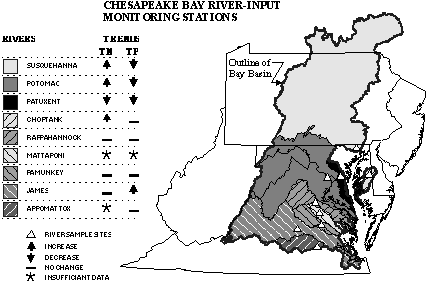
So where are the democratic environmental activists rising in support of the EPA, and in opposition to Virginia’s abominable Plan? When I went to a public hearing on the Plan a few weeks ago, a popular local democratic office holder, with a reputation as an environmentalist, was there loudly criticizing the EPA for enforcing the mandatory requirements of the Clean Water Act, which supposedly would impose unreasonable demands on the counties to retrofit waste water treatment plants with technologies to mitigate nitrogen. She complained that this would cost Fairfax County billions, and asserted that a study shows EPA’s new requirements would cost each tax-paying household in Fairfax an additional $1600 in taxes per year. Given the political and economic climate in the country right now, she said, that was untenable.
I asked the officeholder for a copy of the “study.” The County staff estimates of costs for Farfax have ranged from $90 million to $290 million per year. Those figures result in a far lower per household cost: and those numbers don’t take into account the federal grant money available to communities to implement these new regulations.
Working for the non-profit on behalf of the waterkeepers, I made short work of Virginia’s proposed Watershed Implementation Plan in a comments template I prepared. Each water-keepers organization adapted the comments to the particulars of the rivers they “kept” and then forwarded their comments to Governor McDonnell, and other Chesapeake governors. Virginia’s final proposed plan is due to come out tomorrow. With apparent bipartisan resistance here in Virginia to following the plain mandates of the Clean Water Act, and serious pending threats from Republicans in Congress to defund the EPA, the odds are not good that when the final plan is released, we will find that Virginia’s Republican McDonnell Administration has been persuaded to fix the plan by the thousands of comments the Commonwealth has received.
In the past few weeks, I was contacted by Susan, now my oldest known friend, on Facebook, and we have been exchanging messages, and reminiscing about the old neighborhood. I have not yet passed on to her the so-far good news about the Crick, but by copy of this blog post, I am about to do so.
Through Susan, other old friends from the neighborhood have suddenly found me, or I have found them, and we have begun a correspondence. One of those old friends was Jon, who I ambushed with a message referring to his blowing up the Crick and chemical magic.
Recently, I was elected chair of a “Friends” Committee that looks after the huge Fairfax County Park behind my house. It has a big lake in it, a significant stream, and a little creek flowing into the lake that runs right outside the window I am now sitting in. I do not think the little creek has a name, but in it lives all kinds of creatures, including big snapping turtles, and little fishes. There is a culvert half a block from our house on which you can sit, dangle your legs over the water and watch the creek roll out under your feet.

Copyright, The Donkey, 2010. All rights reserved.





